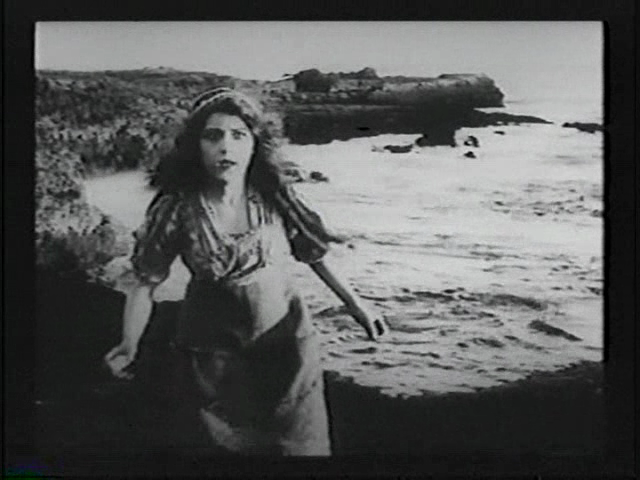How many art movements have
started and been at their creative peak, with a reasonably small group of
people working and collaborating in close proximity? From the aesthetes
squeezed into Le Deux Maggots or The Fitzroy Tavern to the rockers in Sun
Studios, the Cavern or CBGBs… there were “scenes” involving a few dozen who
changed their artistic worlds over coffee, beer and the odd fight.
It’s inevitable that every big bang starts with a singularity and then expands outwards gathering mass
from the closest objects before establishing a broader, “universe”? So it was
that the second full decade of film saw a new wave of American artists working
closely together to improvise and innovate the form towards the structure which
would go on to form the basis for the mainstream
for years to come.
 |
| Charles West, Mabel Normand and Mary Pickford |
D.W. Griffith was at the
centre of things working with ground-breaking cinematographer G.W. “Billy” Bitzer
along with some of the actors who came to define the art of motion picture
performance. In The Mender of Nets –
made early in 1912 – he worked with two of the most naturalistic: Mabel Normand
and Mary Pickford. Whilst Normand was a straight-faced, instinctive, comedian
on a par with Roscoe Arbuckle (and later Charlie), Mary had only Lillian Gish
who could possibly rival her subtle and uncanny understatement.
Recognising this, Mary gets a
lot of “face time” in Nets… the film
begins and ends with her sitting against a stunning cliff-face backdrop and you
strain to catch every nuance of expression… always to be rewarded with a
glimpse of real hope, love and pain… even in a story of relative
predictability.
Mary plays the eponymous
net-mender who sits against the seaside backdrop until she is joined by a
couple of fishermen, one of whom, Charles West, proposes to her. Mary
celebrates her engagement with her father – holding out the ring and admiring
it as you do but her beau slips off and encounters his “weakness” his former
girlfriend – Mabel Normand.
 |
| Mabel's concerned |
He stomps off in search of
the man and is seen by Mary… and there’s a desperate daisy-chain of pusuit as
Mary follows him to her fiancé’s and Mabel sets off to prevent catastrophe for
both the men in her life.
There’s real tension over the
closing part of the film as you wait for tragedy and braced in hope for some
kind of happy ending.
It’s deceptively simple with
exceptional shots from Bitzer and slick editing from Griffith who was churning
out these one-reelers with regular ease. He knew what he had with his leads and
gives Normand plenty of screen time to show despair, hope and disappointment.
But it’s Mary Pickford who
takes the laurels: Bitzer just had to point his camera and shoot such was her
mastery of understated, film acting. Up on the screen the audience would get
the closest possible view of the her
medium-shot emoting and at one point, she moves up to and past the camera in
much the same way as Elmer Booth in TheMusketeers of Pig Alley released later in 1912.
The Mender of Nets (1912) remains a poignant short story and retains a surprise even for
jaded eyes. It was available on Milestone’s Sparrows DVD but now seems out of
print and copyright. You can find a decent copy at the Internet Archive: Mary
and Mabel – what’s not to like?
.gif)












+2.jpg)

No comments:
Post a Comment